Enjoy this gallery of Diceroprocta apache photos by Adam Fleishmam from 2007.
Visit Adam’s Photography Website.

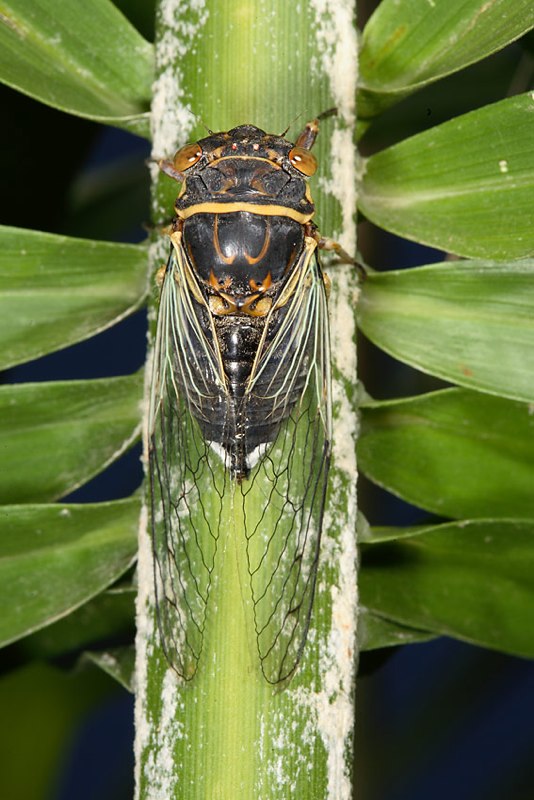
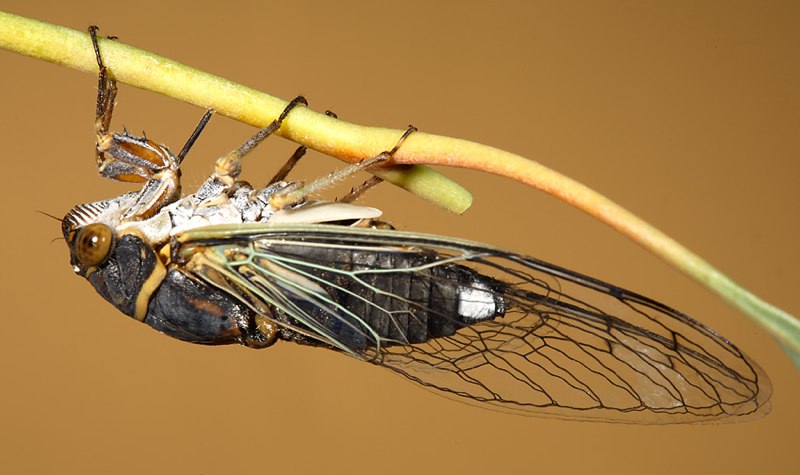
Empty nympal skin:
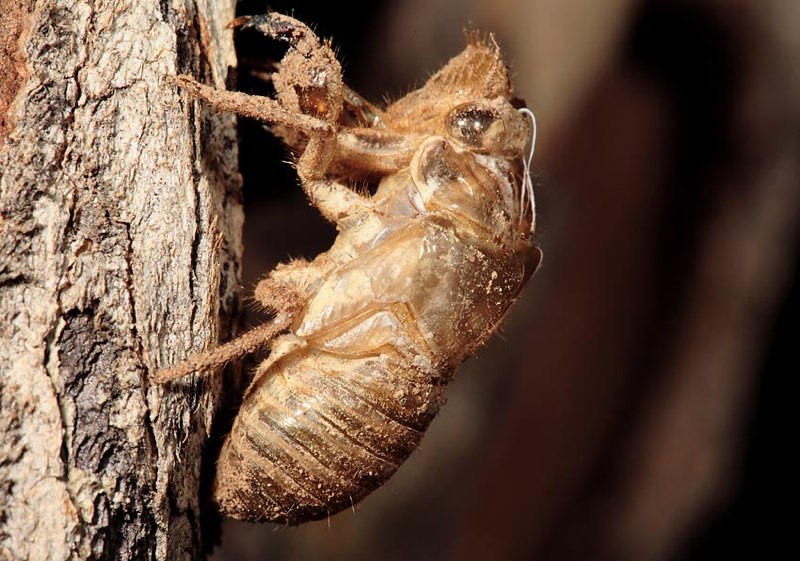
Dedicated to cicadas, the most amazing insects in the world.
Enjoy this gallery of Diceroprocta apache photos by Adam Fleishmam from 2007.
Visit Adam’s Photography Website.



Empty nympal skin:

Here’s our one any only 2007 Brood XIII gallery:
Photos by Jan & Roger. Click for larger versions of the images.
A mix of Magicicada skins and adults from Brood XIII:
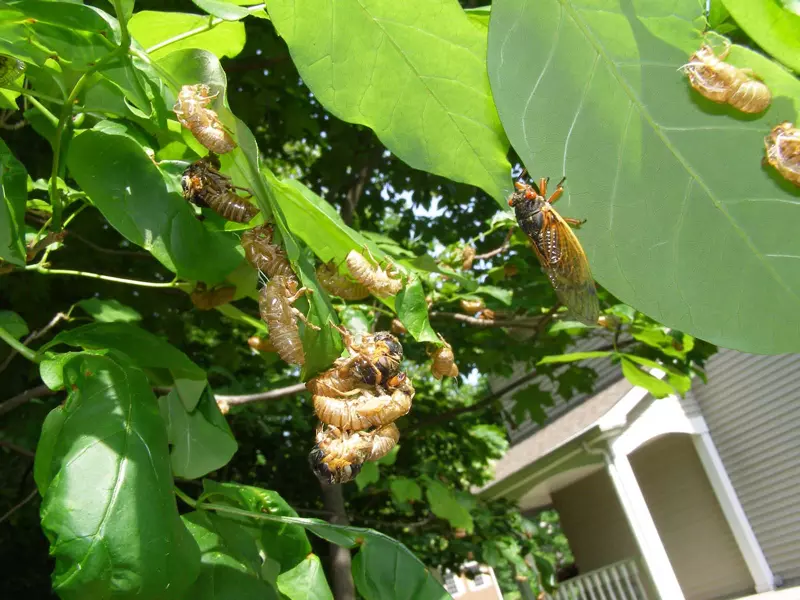
Many Adult Magicicada cicadas from Brood XIII:
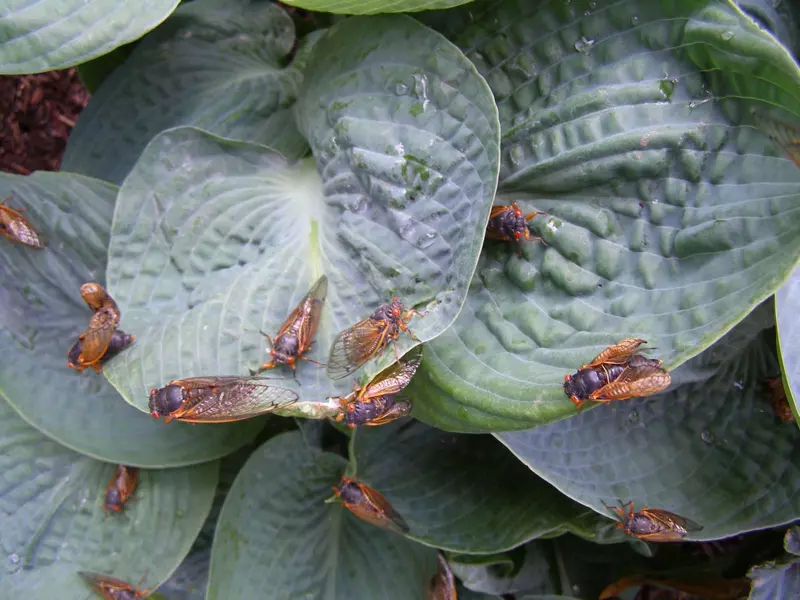
An Adult Magicicada cicada from Brood XIII:
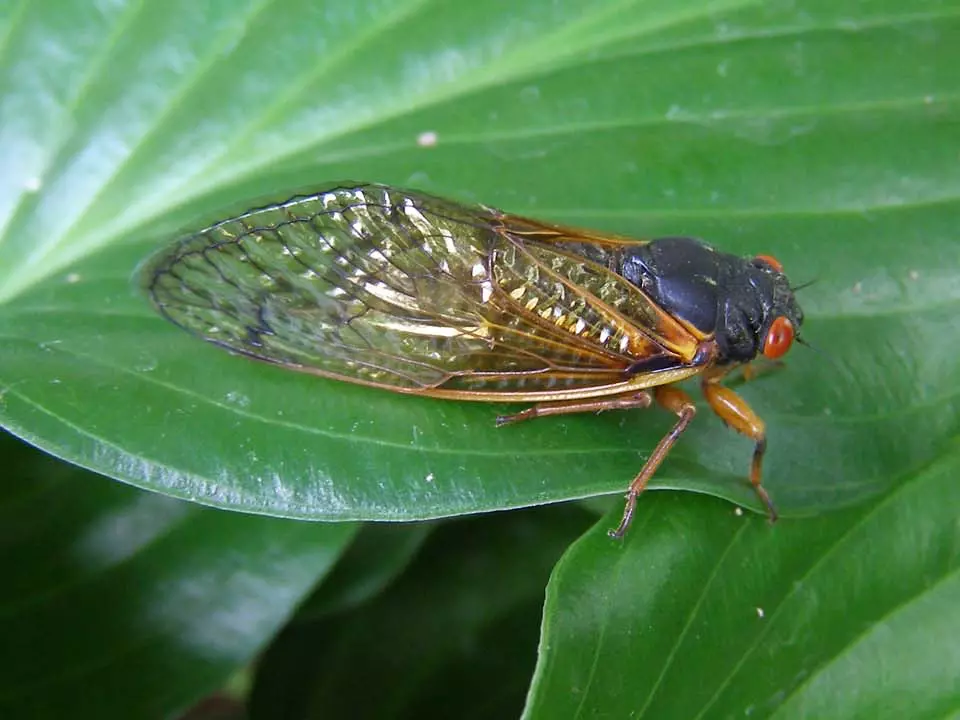
Many adult Magicicada cicada from Brood XIII:
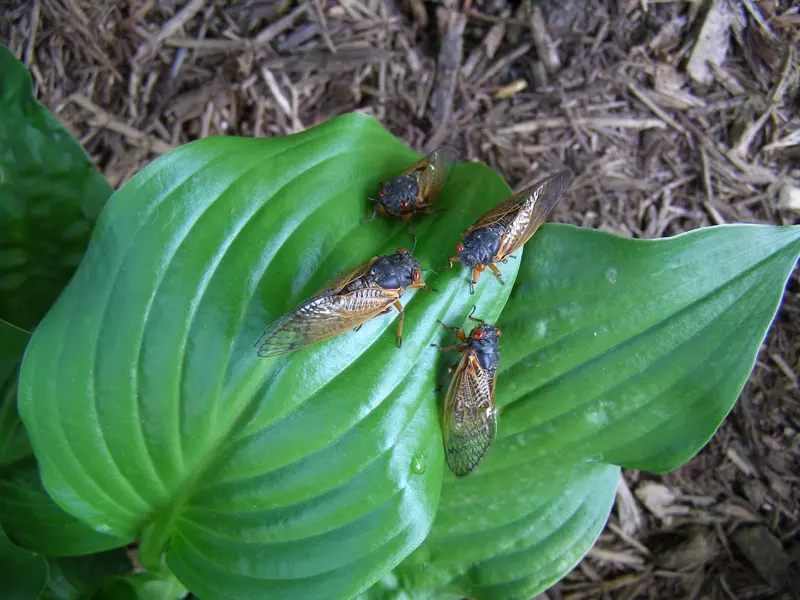
Adult Magicicadas from Brood XIII:
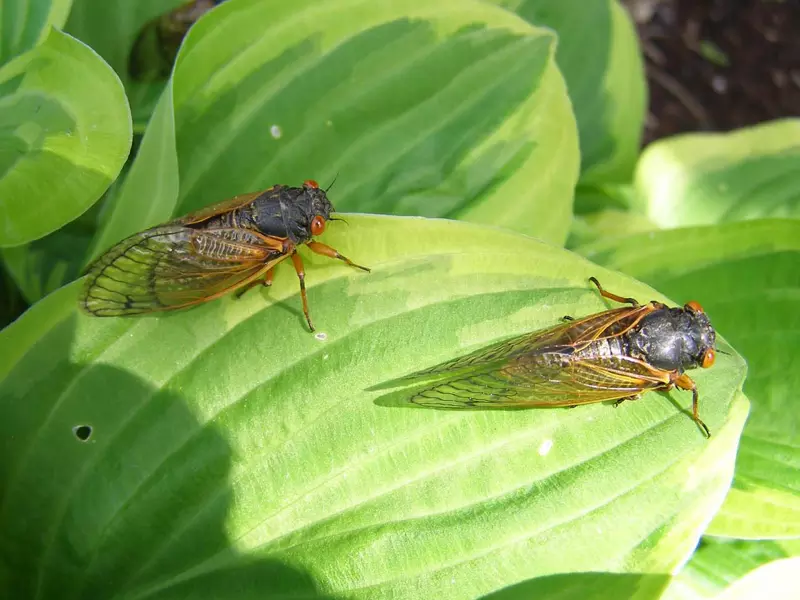
Magicicada adults from Brood XIII:
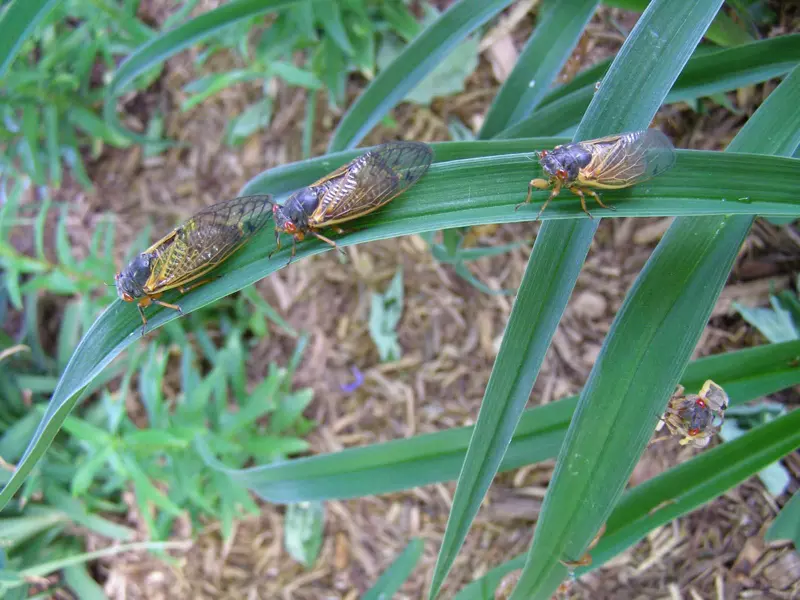
Magicicada holes from Brood XIII:
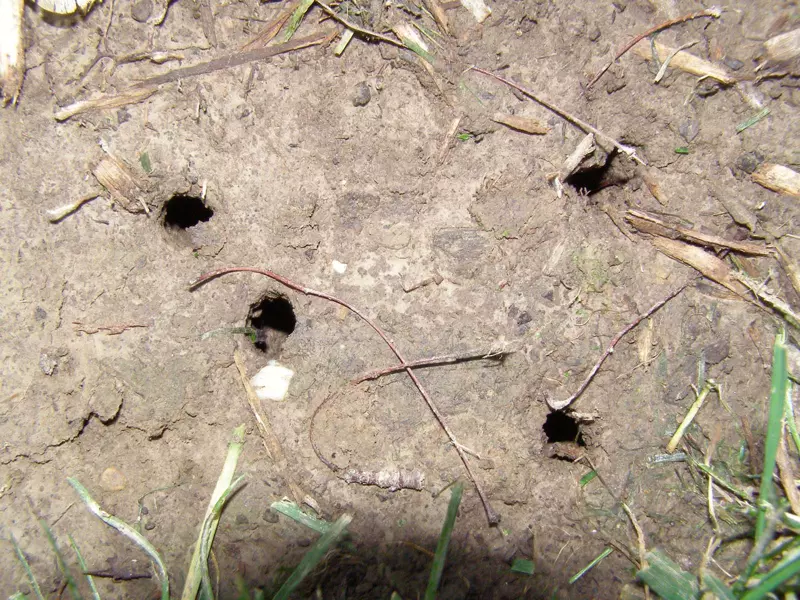
Magicicada skins from Brood XIII:
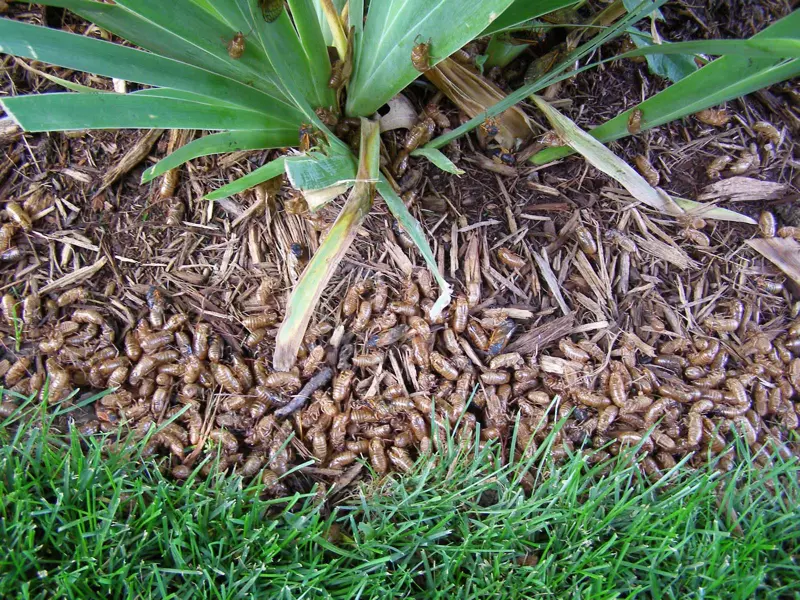
Molting Magicicada from Brood XIII:
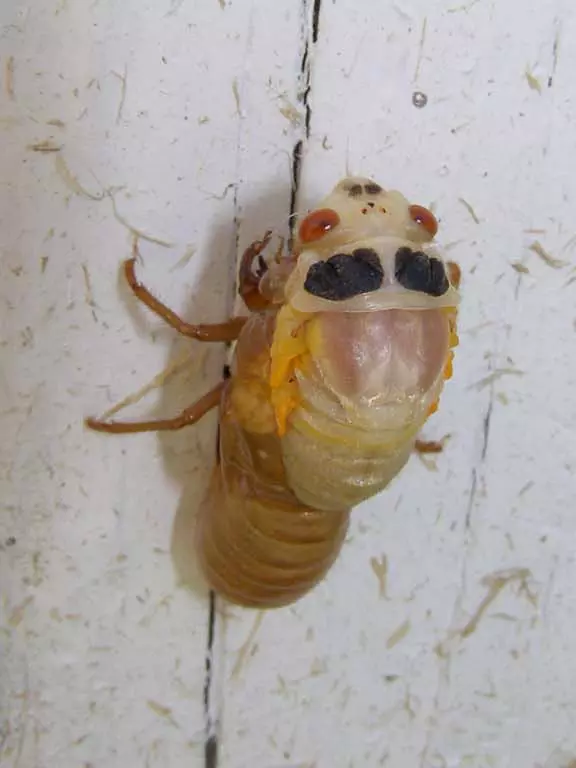
Nymph and adult Magicicada from Brood XIII:
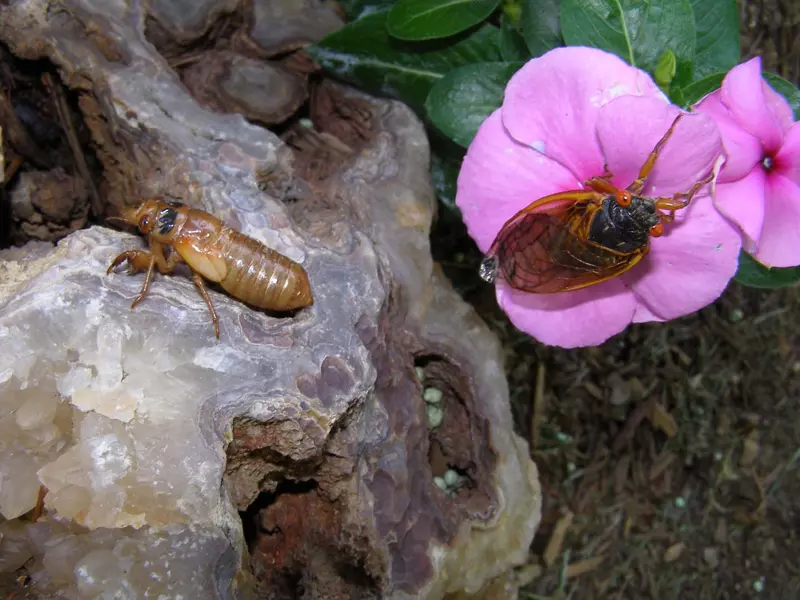
Teneral, recently molted Magicicada:
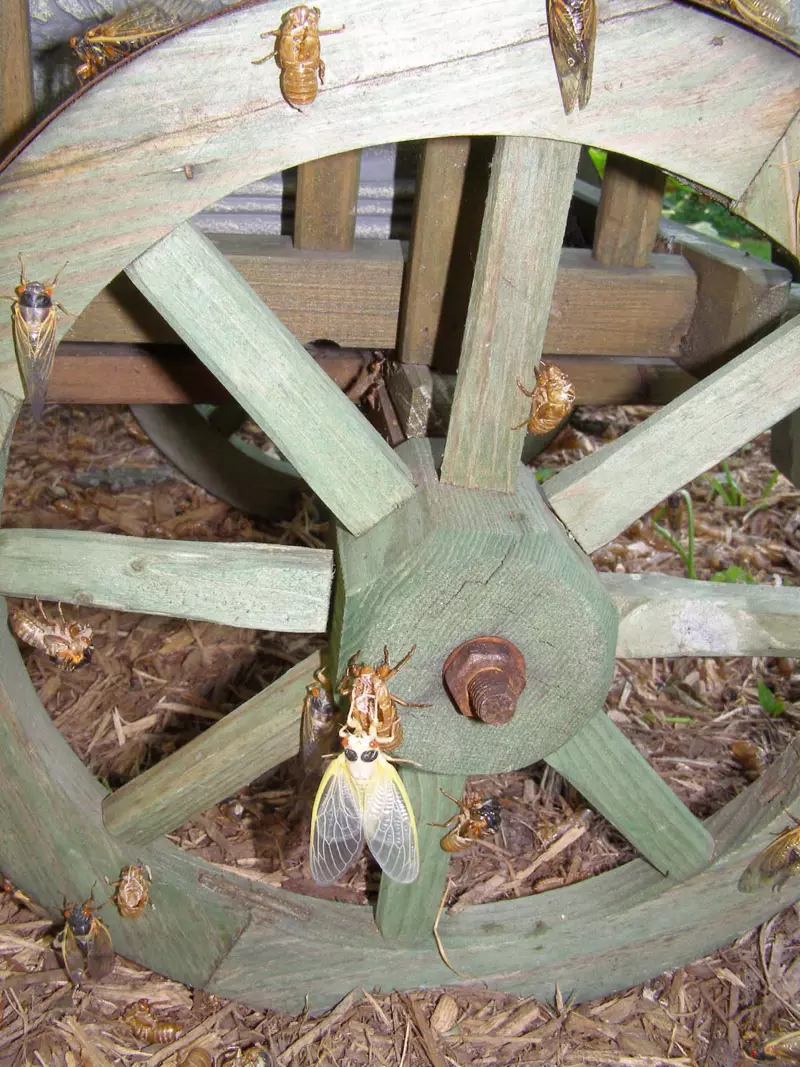
Here’s a picture of Magicicada eggs from Roy Troutman. They’re about 3-4mm long. Very tiny.
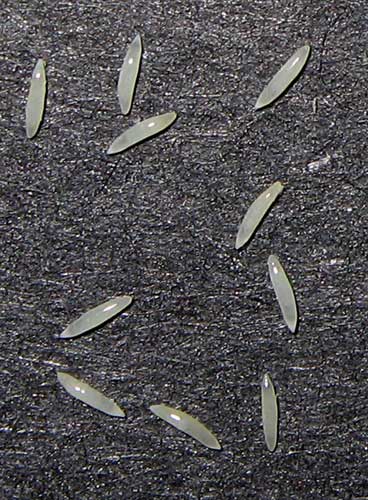
Brood XIII is all but gone in and few select areas (like Westmont IL for instance). Will you miss them? You might find a couple stragglers next year, but you’re going to have to wait until 2024 for the next Brood XIII emergence.
At this point you should start to see flagging from the Brood XIII cicadas: brown, dead leaves where the cicadas laid their eggs.
If you’ve willing to travel, you can see and hear the Brood XIV next year too.
Deanna’s cicada photos on Flickr are a nice representation of the Brood XIII emergence. Check them out whenever you want to reminisce.
More Brood XIII photos to come, and lots of other cicada fun is coming up, so stay tuned!
Update: make sure you check out all the cool images people added to Comments section of the CicadaMania MySpace page.
A few of you might have noticed the film crew following me around the Cicada Mania festival. They filmed me at the festival, as well as back in Jersey — a once in a life time (or maybe once in 17 years) experience. The news cast aired yesterday in Japan, but you might be able to see it on a show called “Morning Eye” in North America.
Here is the final news story:
Roy Troutman, Gerry Bunker and Joe Green also appear in the video.
Michael Jimms sent us this photo of a blue eyed Magicicada:
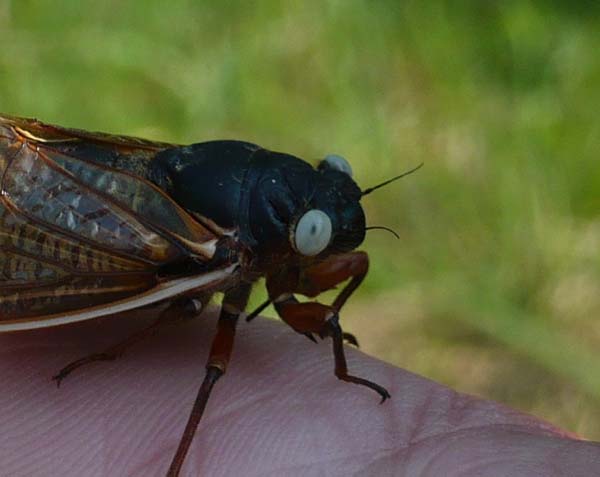
Michael won the last button in the blue/white/gray eyed cicada category.
Congratulations to all the winners. There are still prizes left in the contest: for Multi Colored Eyed cicadas, and for an emerging nymph with white eyes. Good luck.
A creamy white eyed cicada from Morton Grove by Judy Thorpe:
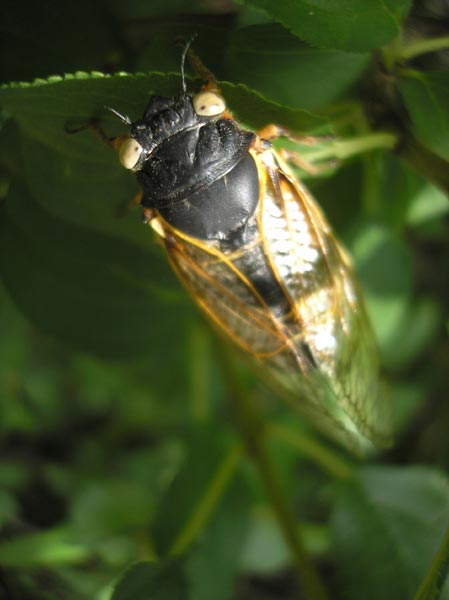
And…
A true-blue eyed cicada from Western Springs by Matt Weiss:
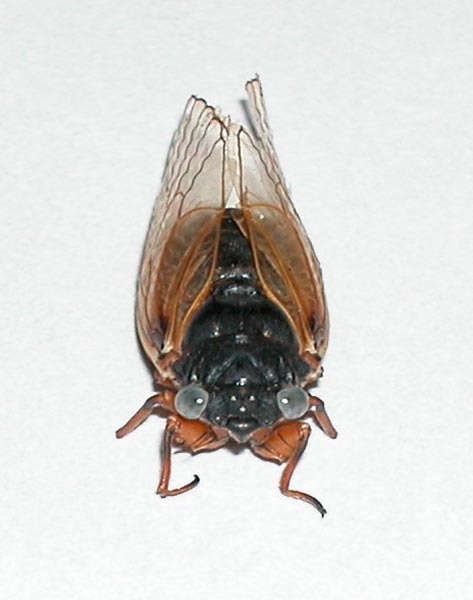
Here’s a white eyed cicada from Grayson Martin.
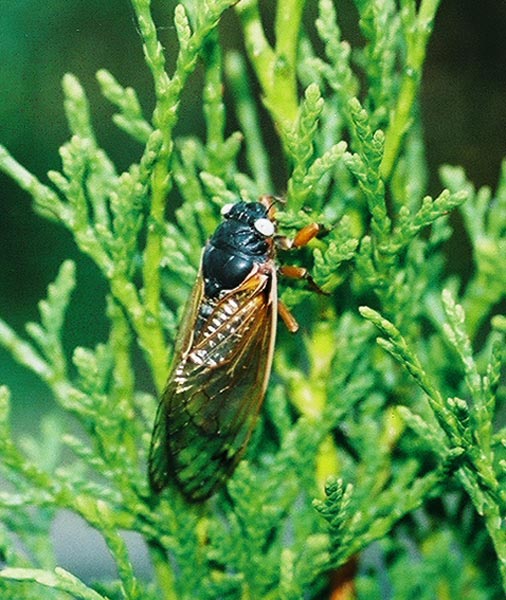
Questions:
Locations: